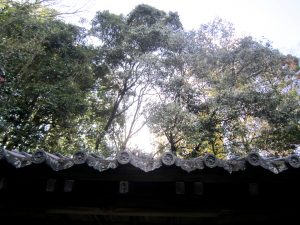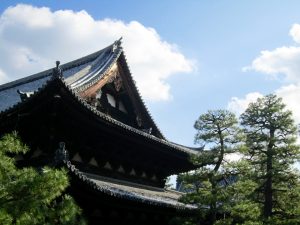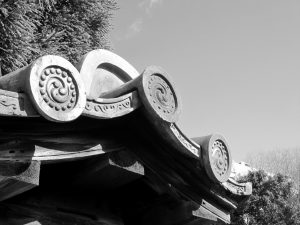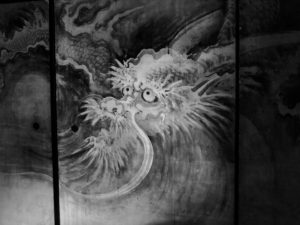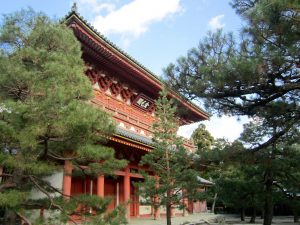
One of the main buildings of Daitokuji
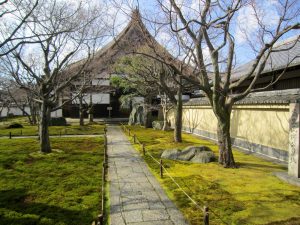
A sub-temple of Daitokuji
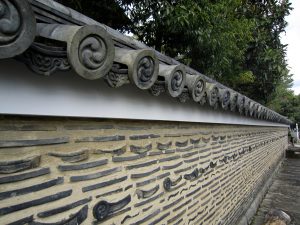
As we walked around the temple complex of Daitoku-ji today, I felt a deep sense of calm and appreciation for my surroundings. We’d been warned to expect very cold weather, but it was actually a beautiful, sunny day. Strolling down the tree-lined pathways, feeling the sunlight on my face, and admiring how the light sparkled through the tall stalks of bamboo and filtered through the moss-covered trees was certainly a treat after the cold, grey weather of Williamstown. There’s actually a Japanese word for the effect of dappled light streaming through the leaves of trees, and looking at the patterns of light on the neatly cobbled paths, I could understand how and why such a beautiful word might originate in Japan.

Walking down this moss and bamboo-lined path was surreal. There were so many shades of green!
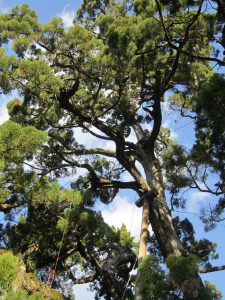
Imagine all of the things this beautiful, old tree must’ve witnessed
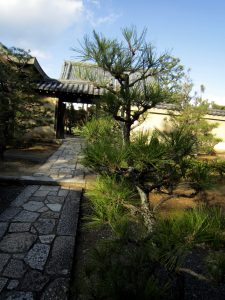
What struck me even more than the weather, however, was the way in which Daitoku-ji’s subtemples seamlessly integrated interior and exterior, creating a harmony between architecture and nature that permeated the whole space with a sense of balance. Sliding screens created fluid boundaries between rooms, while the uncovered windows, empty doorways, and rooms with minimal walls opened up the interior space to the peace of the well-maintained gardens. It must be an incredible experience to meditate in one of those rooms, hearing the chirping of the birds and looking out at a jewel-like green moss garden or at the soothingly undulating the ridges of the sand in a rock garden. Even the rooms that were darker and more closed off had tiny windows that perfectly framed breathtaking views of a garden. We even saw a roof that had a section carved away for a tree that was growing through it.
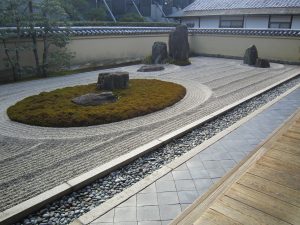
A dry landscape garden at Ryogenin sub-temple
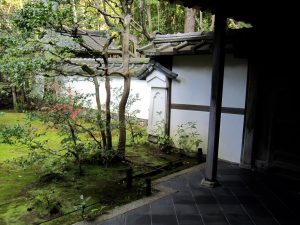
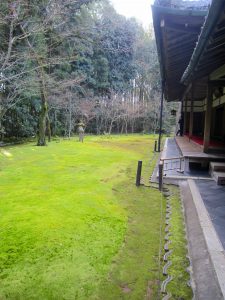
At Juko-in, I loved seeing the sunlight streaming into the building and animating Eitoku Kano’s already dynamic wall paintings. As we walked along the perimeter of the temple building, keeping the rooms on one side of us and the gardens on the other side, it was really special to see how the landscaping of the garden echoed, complimented, and responded to the wall paintings in the rooms within. At Koutou-in, we also had the opportunity to walk through one of the gardens, and that allowed me to appreciate even more the level of care that evidently goes into them. What was so remarkable was that despite this cultivation, the garden itself felt extremely natural, with the care seeming to enhance, rather than diminish, its natural effects.
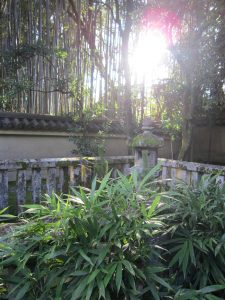
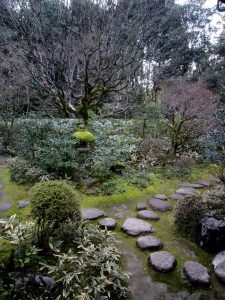
My exposure to Zen Buddhism before this had been mainly through meditation, koans, and sutras, but after touring Daitoku-ji and listening to a lecture by Professor Catherine Ludvik, I now have a much greater appreciation for the cultural and artistic aspects of Zen Buddhism. As I look back and my photos from the day and think about the fact that they really don’t do Daitoku-ji justice, I realize that Daitoku-ji’s powerful effect is less visual than atmospheric. The temple is not so much something to be seen as it is something to be experienced. Its temples really do foster and promote the unity and harmony that are so central to Zen Buddhism.
